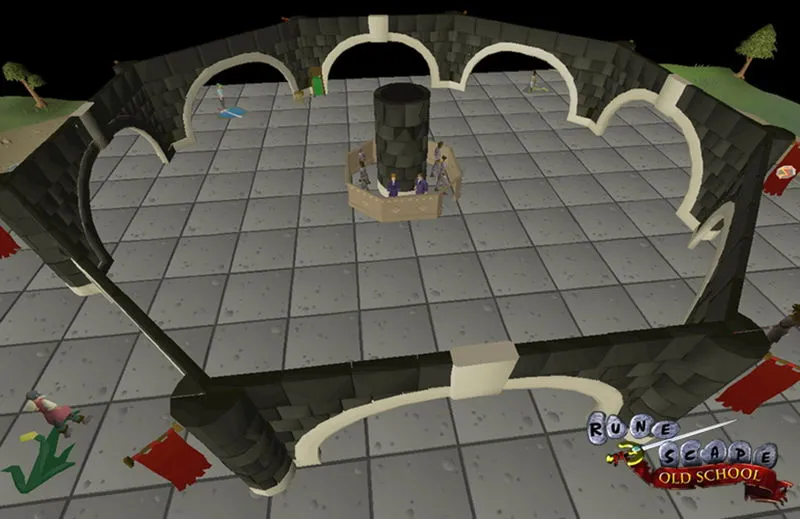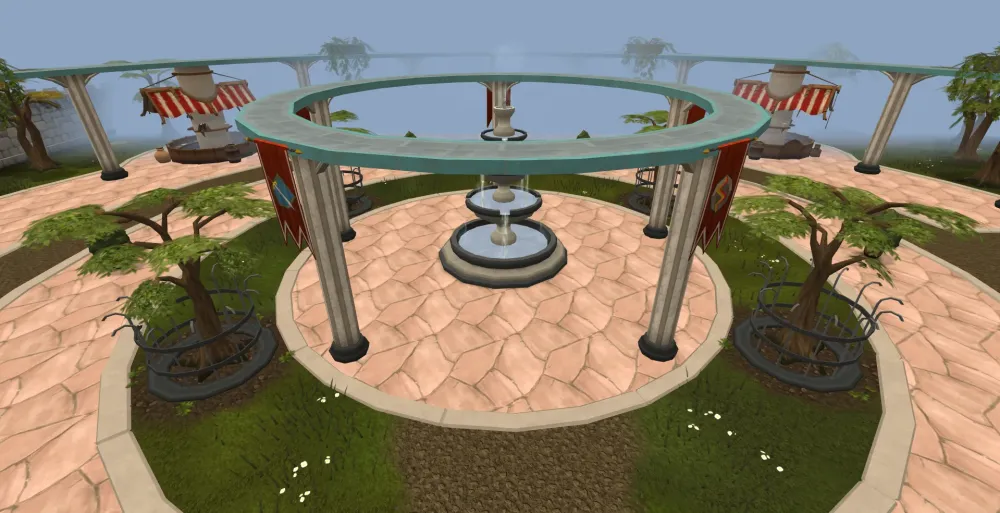Your cart is empty
Grand Exchange History in Old School RuneScape

The Grand Exchange, or GE, is a cornerstone of trading in Old School RuneScape (OSRS), revolutionizing how players buy and sell items. Since its introduction, it has shaped the game’s economy, player interactions, and strategies. This blog post dives into the history of the Grand Exchange in OSRS, exploring its origins, implementation, updates, and lasting impact. Whether you’re a seasoned player or new to Gielinor, understanding the GE’s journey offers insight into the game’s evolution.
Before the Grand Exchange, trading in RuneScape was a manual process. Players shouted offers in busy hubs like Varrock or Falador, relying on direct player-to-player exchanges. This system, while nostalgic, was time-consuming and inefficient, especially as the player base grew.
Pre-GE Trading Systems
In the early days of RuneScape, trading relied on personal interactions. Players used forums, in-game chat, or the Trading Post (introduced in 2014) to advertise items. The Trading Post was a step toward automation, allowing players to list offers, but it still required manual coordination.
- Manual Trades: Players met in person to exchange items, often in crowded banks.
- Trading Post: A precursor to the GE, it displayed offers but lacked automated matching.
- Zybez Guides: External sites like Zybez provided price references, filling gaps left by the game.
Why the GE Was Needed
As OSRS grew, the demand for a streamlined trading system became clear. Manual trading led to scams, price manipulation, and frustration, particularly for new players. Jagex recognized the need for a system that could handle high trade volumes while reducing player effort, setting the stage for the GE’s introduction.
Introduction of the Grand Exchange in OSRS

The Grand Exchange was released in OSRS on February 26, 2015, after a contentious community poll. Its arrival marked a pivotal moment, bringing a system familiar to RuneScape 3 players into the nostalgic world of OSRS.
The 2015 Poll Drama
Jagex proposed the GE to replace the Trading Post, but the idea sparked debate. Some players feared it would erode OSRS’s old-school charm, reducing player interaction. Others saw it as a necessary evolution. The poll required a 75% approval rate and passed narrowly with 76.3%, reflecting the community’s divided sentiments.
Initial Implementation
Located northwest of Varrock, the GE allowed players to post buy or sell offers that matched automatically. Members received eight trade slots, while free-to-play players got three. Unlike manual trading, players didn’t need to stay at the GE—items and coins could be collected from any bank. Initial prices were set using Trading Post data and external guides, with the system designed to adjust dynamically based on trades.
| Feature | Details |
|---|---|
| Location | Northwest of Varrock, east of Edgeville |
| Trade Slots | 8 for members, 3 for free-to-play |
| Collection | Items/coins collectible at any bank |
Evolution and Updates
Since its launch, the GE has seen tweaks and enhancements to improve functionality and address player feedback. These changes have kept it relevant while maintaining its core purpose.
Price Limits and Market Dynamics
To prevent economic abuse, Jagex introduced buy limits, restricting how many of certain items a player could purchase daily. For example, high-demand items like runes or ores have specific caps to deter monopolies. Over time, the GE’s pricing system stabilized, reflecting true market values as trade volumes grew.
Grand Exchange Database
In tandem with the GE, Jagex launched the Grand Exchange Database on the OSRS website, allowing players to track item prices over 180 days. This tool, similar to a stock market interface, includes price graphs and trade volume data, empowering players to make informed decisions. It’s particularly useful for merchants flipping items for profit.
Notable Updates
- 2015 Tweaks: Post-launch patches fixed bugs and adjusted interfaces for clarity.
- Trade History: Players requested longer transaction logs, leading to expanded history tabs.
- Mobile Support: The GE interface was optimized for OSRS Mobile, though quirks like a non-functional negative sign on Android keyboards were noted.
Impact on OSRS Gameplay
The GE transformed how players approach trading, skilling, and combat, with ripple effects across the game’s economy and community dynamics.
Economic Efficiency
The GE slashed transaction times, letting players focus on gameplay rather than haggling. Items like runes, arrows, and ores became easier to acquire, boosting skilling and combat efficiency. However, some argue it reduced the value of rare items by making them more accessible.
Player Interaction Debate
Critics of the GE claim it diminished player-to-player trading, a hallmark of early RuneScape. Before the GE, trading fostered social bonds, even if tedious. Supporters counter that the GE freed players to engage in other social activities, like group bossing or clans, without sacrificing trade convenience.
Merchanting and Flipping
The GE gave rise to merchanting, where players buy low and sell high for profit. Flipping—buying items below market price and selling them higher—became a popular money-making method. The GE Database aids this strategy, though it’s led to concerns about price manipulation by clans, a practice less prevalent since trade restrictions were lifted.
Legacy and Future of the Grand Exchange
A decade after its OSRS debut, the GE remains integral to the game, balancing convenience with the old-school ethos. Its legacy is a testament to Jagex’s ability to adapt while respecting community input.
Cultural Significance
The GE is more than a trading hub; it’s a cultural landmark in OSRS. Players gather there to chat, show off gear, or simply vibe. Its bustling atmosphere, filled with NPC clerks and player avatars, evokes a sense of shared purpose, even if trades happen behind the scenes.
Community Feedback and Polls
Jagex’s commitment to polling keeps the GE responsive to player needs. Past suggestions, like adding a price checker or CoinShare, show the community’s influence. Future updates might expand slots, refine interfaces, or integrate new items, depending on polls.
Challenges and Opportunities
While the GE is lauded, challenges persist. Price volatility for rare items, like discontinued holiday goods, can frustrate players. Bots and gold farmers also exploit the system, though Jagex’s anti-cheat measures aim to curb this. Opportunities exist to enhance the GE, such as better mobile integration or real-time price APIs, but any change must pass the community’s scrutiny.
The Grand Exchange’s history in OSRS is a story of adaptation and balance. From its controversial 2015 launch to its current status as a game staple, it reflects the evolving needs of players and Jagex’s responsiveness. Whether you’re flipping for millions or buying a single lobster, the GE shapes your OSRS experience, proving that even in a nostalgic game, innovation finds a place.
